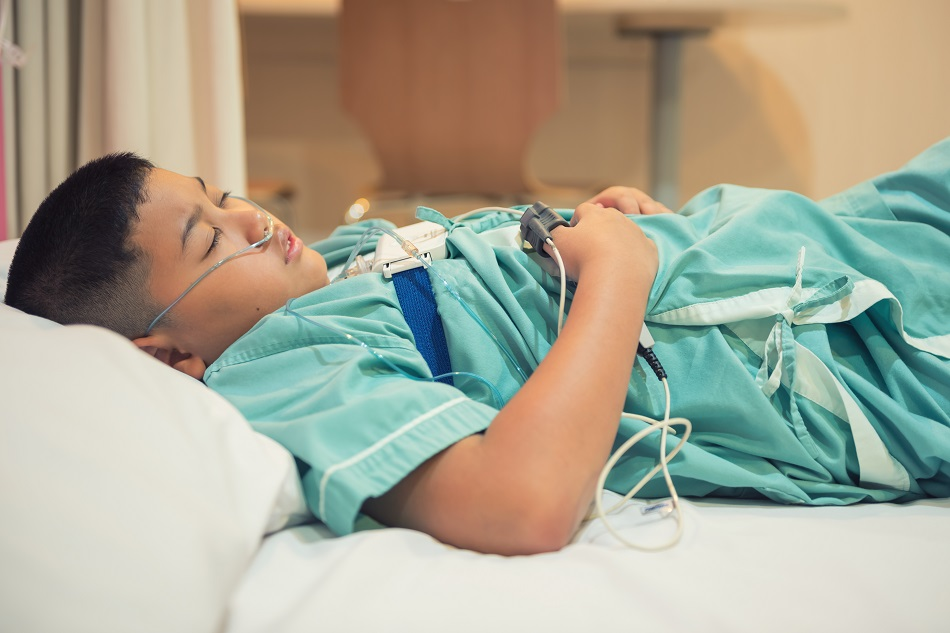By Kalwinder KaurAug 16 2012

Image Credit: Pisit Rapitpunt/Shutterstock.com
Snoring is a condition typically described as a coarse sound made by the vibration of respiratory structures in the nose and throat. Impossible to cure, the condition is controlled using a number of techniques that help by clearing the breathing passage. Snoring is often associated with another underlying condition, known as obstructive sleep apnoea (OSA).
OSA is a condition expressed in a pause or reduction of airflow due to a relaxation and momentary collapse of the tongue and surrounding soft tissue in the thorax whilst breathing, causing a total blockage of the airway. This condition is a key contributing factor to snoring. It is estimated that at least 4% of men and approximately 2% of women in the UK suffer from OSA. Based on statistical data by the British Lung Foundation, OSA is more prevalent than Asthma among the adult population in the UK and is widely underdiagnosed. The following video illustrates the process of obstructive sleep apnoea.
A sleeping mask is often applied to regulate the patient’s breathing and to maintain a clear airway, though this method is likely to obstruct the patient’s movement and to deprive the patient from entering a deep state of sleep.
Treatment – Implantable Sensor
Despite the existence of several medical interventions to put snoring to rest for good, there is still no simple solution. Research and clinical trials have revealed the effectiveness of using an implantable tongue pacemaker (i.e., neurostimulator [sensor]) to prevent pauses in breathing that can normally lead to snoring. Physicians at the Department of Otorhinolaryngology and Head and Neck Surgery, Antwerp University Hospital, Belgium, have demonstrated the effectiveness of a neurostimulator to regulate patient’s airflow during sleep.
Neurostimulator – Structure and Function
Neurostimulation is one of the most advanced methods currently being tested to treat OSA. Inspire Medical Systems is a leading developer of implantable neurostimulators for treating OSA. The team has pioneered a new upper airway stimulation therapy to help reduce the blockage on the airway by delivering an electrical impulse to the upper respiratory tract during the sleep state.
The neurostimulator Inspire system is designed to prevent the tongue and soft tissue in the thorax from collapsing and blocking the airway during sleep. A functional principle to this system involves detecting the body’s natural mechanisms to regulate breathing and then transmitting a signal to the pulse generator upon each breathing cycle. As the patient attempts to breathe, the generator delivers an electrical impulse via a second cable to the hypoglossal nerve – located under the tongue, and responsible for the regular stimulation of pharangeal neuromuscular activity. The electrical stimulation controls the muscle tone to the tongue, which then prevents the tissue from collapsing.
Considering the structure and function of neurostimulators, these instruments are not so different from a pacemaker. Neurostimulators are designed to have an implantable pulse generator, a lead, and an extension, with all components working in synchronization using an electrical current. The implantable neurostimulator includes a pulse generator, sitting under the skin in the chest with the electrode component fixed to the target nerve. The electrical pulse generator then transmits a current to the electrodes via an extension lead that excites the nerve, and in the event of treating OSA would mean exciting the hypoglossal nerve. Neurostimulation is also used for the treatment of conditions different from OSA, such as pain relief for instance.
Clinical Studies
Clinical research studies to test the validity and efficacy of the implantable upper airway stimulation device have demonstrated this form of therapy for OSA to be safe and efficacious in a select group of patients. For example, Van de Heyning et al (2012) conducted two open prospective studies on the use of the upper airway stimulation system in patients with moderate-to-severe OSA. They found that patients responded positively to the implanted system based on a significant reduction in the Apnea-hypopnea index from baseline to six months after first implanting the device.
Research by Oliven et al (2003) studied the pressure-flow relationship and response to genioglossus (an extrinsic tongue muscle that forms the body of the tongue) stimulation in patients suffering from OSA. The findings revealed that the implantable device shifted the pressure-flow relationship to a high flow level in these patients, thus demonstrating the efficacy of the implantable neurostimulator in treating OSA.
An extensive amount of research has explored the study of electrical stimulation of the hypoglossal nerve to treat OSA by using implantable sensors. However, reviews on this topic stress the need to optimize the device features and stimulation parameters before clinical practice can consider making nerve stimulation a viable option for treatment compared to the commonly used airway pressure and surgical interventions.
Sources and Further Reading
This article was updated on 12th February, 2020.
Disclaimer: The views expressed here are those of the author expressed in their private capacity and do not necessarily represent the views of AZoM.com Limited T/A AZoNetwork the owner and operator of this website. This disclaimer forms part of the Terms and conditions of use of this website.